Meet Lamar Hunt, the man who named the Super Bowl, pioneered the rise of soccer in the US, and whose family was linked to the JFK assassination.
He was also a Dundee United shareholder.
Here was a man born into one of the greatest oil fortunes in the US.
His father – the infamous Texan oil magnate H.L. Hunt – is said to have served as the inspiration for the larger-than-life character of J.R. Ewing in Dallas and his name even cropped up in some of the more far-fetched conspiracy theories about the 1963 assassination of President John F. Kennedy.
Life and times
While floundering in an investment in miniature golf courses, Lamar Hunt watched the 1958 NFL Championship Game at home on television.
It was from watching this game that Hunt made several efforts to buy a team in the NFL before setting up a rival American Football League in 1959 at the age of 27.
He founded his own AFL team, the Dallas Texans, in 1960, which Hunt moved to Kansas City three years later and was re-named the Chiefs.
The two leagues merged in 1966, and decided to follow the example of baseball’s World Series by instigating an end of season play-off between their respective winners.
Hunt proposed the match-up should be called the Super Bowl.
By the mid-1960s, Hunt’s attentions had also turned to soccer and he founded the Dallas Tornado as members of the United Soccer Association (USA).
In the rush to get ready for the 1967 season, the 12 franchises of the USA decided to import overseas teams and Dundee United were invited to play as Dallas Tornado.
The problem for United was that Tornado wore blue and white.
The desire not to be mistaken for Dundee led to United wearing burnt orange.
United won the hearts of their 16,431 Dallas fans when they played their first game at the Cotton Bowl against the Houston Stars, which was Brazil’s Bangu.
“Both the size of the crowd and its enthusiastic reaction surprised me,” said Hunt.
“The attendance was twice what I had thought possible.”
Hunt became a United shareholder
United finished bottom of the Western Division with three wins from 12, although the average attendance was the second highest in the league.
After the 1967 season Hunt was gifted one share in United.
The idea of importing teams to represent franchises was revived during the 1969 NASL season and Dundee United returned for the International Cup.
Then in late summer, the five franchises assembled proper clubs for a 16-game season, with the new Tornado now a collection of new European players.
Hunt organised a game between the new Tornado and United in Dallas as a parting gesture with Jerry Kerr’s side winning 2-0 before heading home.
Pipe-smoking Kerr was also afforded the Freedom of Dallas before he left!
The match was the US city’s last look at Dundee United.
The burnt orange proved popular, though, and, after a suggestion by Jerry Kerr’s wife, Barbara, the Terrors swapped it for their traditional black and white kit.
So it was that they switched to tangerine.
The rest is history.
Hunt’s Tornado would go on to win the 1971 NASL Championship and laid the foundation for soccer’s success in North Texas.
The links between the north and north-east of Scotland and soccer in America continued when the NASL gained momentum in the 1970s.
Jimmy Bone, Bobby Clark, Charlie Cooke, Jimmy Gabriel, Davie Robb and Jocky Scott were just some of the names who played in the league.
A whole legion of journeymen forged new careers in the NASL alongside superstars like Pele, Franz Beckenbauer, Johan Cruyff, Carlos Alberto and George Best.
In 1981, after 15 seasons and losses in the millions, Hunt and his Dallas Tornado partner Bill McNutt decided to merge their team with the Tampa Bay Rowdies.
Two years later, they sold the Rowdies to local investors, before the league collapsed.
Hunt returned to soccer as one of the original founding investors of Major League Soccer in 1996 and operated FC Dallas, Columbus Crew and Kansas City Wizards.
He died at the age of 74 in 2006.
Why did Hunt choose United?
Lifelong Arab and former club historian Tom Cairns said Hunt wanted United to represent Dallas following the success over two legs against Barcelona in 1966.
“Hunt wanted a Scottish club and our choice was probably rubber stamped when we defeated Celtic on Hogmanay 1966,” he said.
“We had certainly been chosen before we beat Celtic at Parkhead in May 1967, as I understand a TV crew from Dallas came and filmed that day.
“A friendship was struck between the two clubs and we were invited back in 1969.
“As far as I know the Hunt family still own at least one share.”
Dundee United Who’s Who author Pat Kelly broke it down further.
“The Hunt family from Dallas were one of the richest in the US,” he said.
“They knew all about making money and Lamar Hunt saw an opportunity in sport.
“Football, or soccer as it’s better known in the US, was a new medium.
“Hunt saw potential and had the power and the wealth to develop the game.
“But here comes the interesting part.
“Did he meet Jack Ruby the day before JFK’s assassination?”
Ruby, of course, was the man who shot the president’s killer Lee Harvey Oswald on Sunday November 24 1963 at the Dallas Police Headquarters.
“Ruby was in the vicinity of Hunt’s office on November 21 1963,” said Mr Kelly.
“Ruby would later tell the investigative authorities that he merely escorted a Connie Trammell, a young woman who had a job interview with Lamar Hunt.
“He said he did not go to the seventh floor of the Mercantile Bank Building where Hunt and his brother, Bunker, operated out of offices there.
“On the day of the assassination a man named Eugene Hale Brading was arrested in Dal-Tex Building directly across the street from the Texas School Book Depository where the shots came from which killed President Kennedy.
“Brading told the police he was in Dallas on oil business and had gone into the building to make a phone call.
“Brading was released without charge and returned to his room at the Cabana Motel.
“It was later established that Jack Ruby visited the motel around midnight.
“Brading had close ties to organised crime and so did Jack Ruby.
“It was later established that it was Bunker Hunt that Brading came to see the day before the president was assassinated.”
Madeleine Duncan Brown, who died in 2002, claimed to be the long-time mistress of President Lyndon Baines Johnson.
During the 1980s, Brown appeared on television shows, claiming she knew LBJ was part of a conspiracy to assassinate Kennedy.
Brown claimed to have attended a party at oilman Clint Murchison’s home on the eve of the assassination that was attended by LBJ as well as other famous, wealthy, and powerful individuals including, J. Edgar Hoover, Richard Nixon and H. L. Hunt.
According to Brown, Johnson had a meeting with several of the men, after which he told her: “After tomorrow, those goddamn Kennedys will never embarrass me again. That’s no threat. That’s a promise.”
“So, was there a link to the Hunt family, the president’s assassination and Dundee United?” said Mr Kelly.
“You have to admit, it is an interesting story.”
More like this:
In pictures: How team boss Jerry Kerr helped build Dundee United’s main stand
When Dundee United were left disappointed after beating Italian giants Juventus
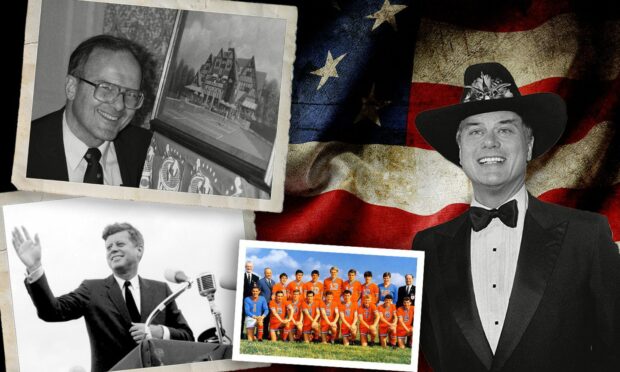
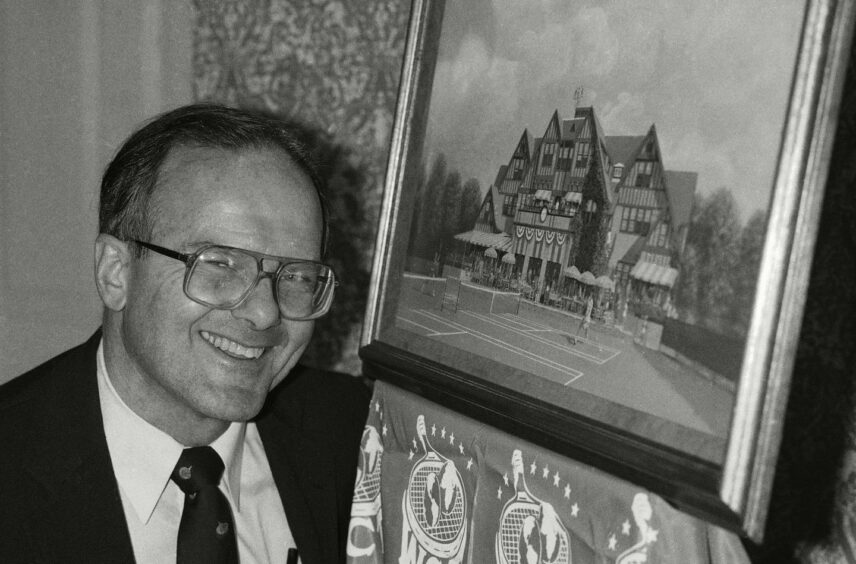
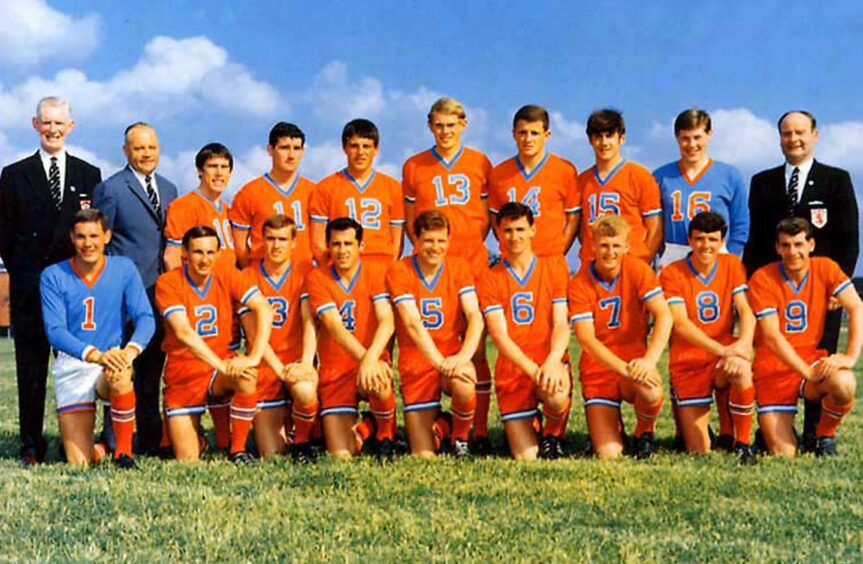
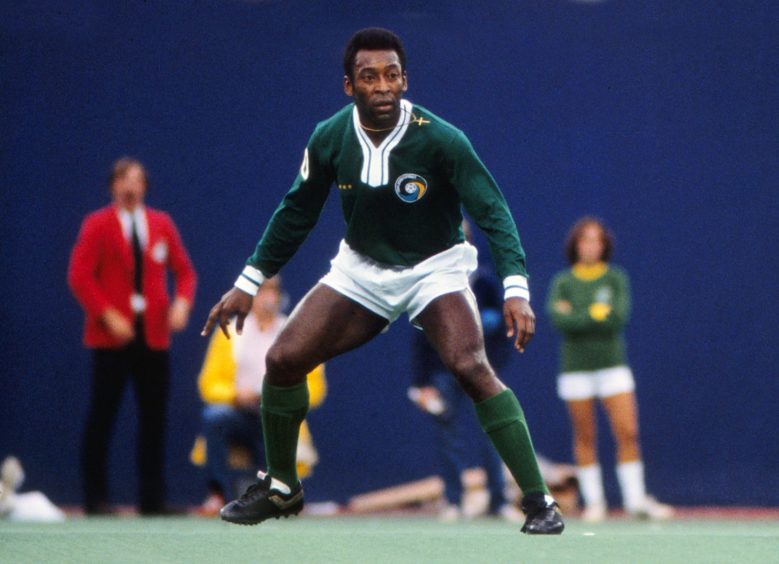
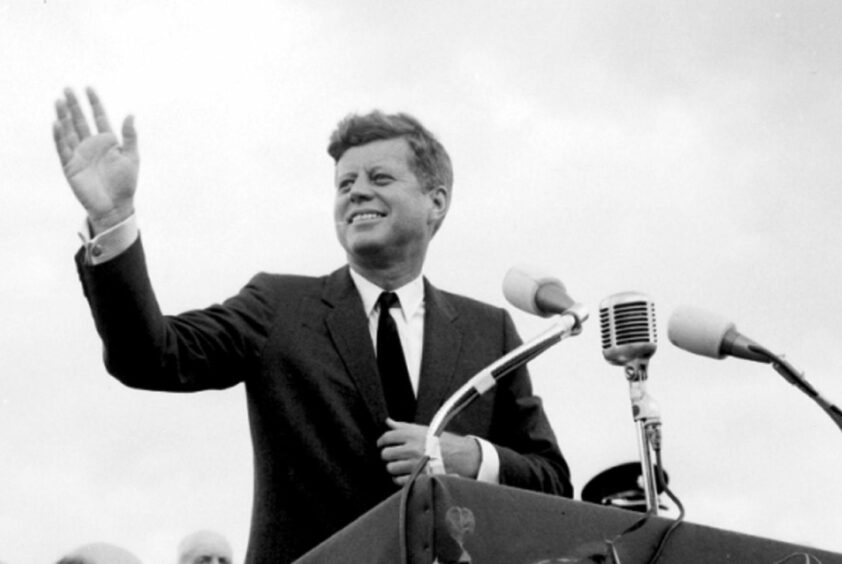










Conversation